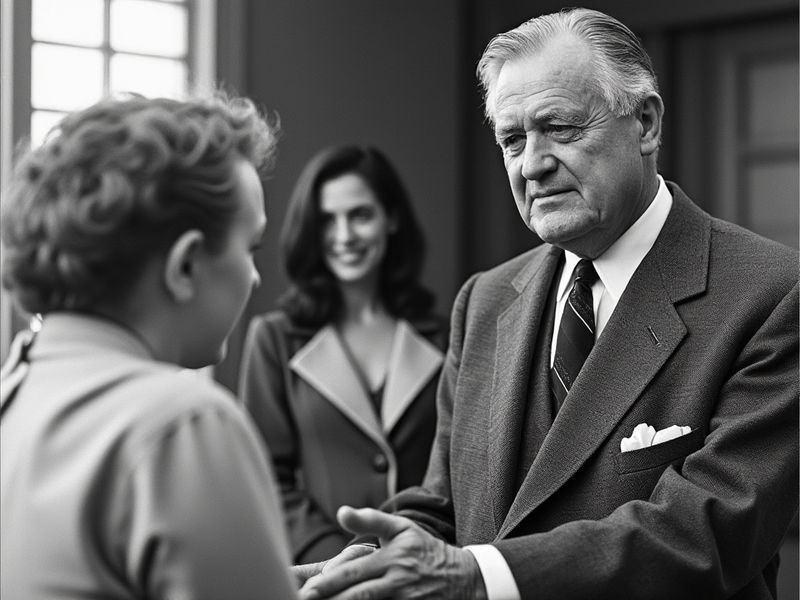Franklin D Roosevelt (FDR), who led the United States | 1being

Franklin D. Roosevelt (FDR), who led the United States through the Great Depression and most of World War II, exhibited a Service-to-Others (STO) orientation in several key aspects of his rhetoric and actions during the war. These elements reflect a deep commitment to humanitarian values, global cooperation, and the well-being of others, even in the face of immense challenges.
1. Humanitarian Vision and the Four Freedoms
One of the most significant examples of FDR's STO orientation is his articulation of the "Four Freedoms" in his 1941 State of the Union address. These freedoms—freedom of speech, freedom of worship, freedom from want, and freedom from fear—were not just for Americans, but for people "everywhere in the world."
STO Orientation:
- Global Concern: By framing these freedoms as universal rights, FDR demonstrated a commitment to the well-being of all humanity, not just his own nation. This rhetoric reflects an STO mindset, where the focus is on serving the broader human family rather than pursuing narrow self-interest.
- Moral Imperative: The Four Freedoms served as a moral foundation for the Allies' fight against the Axis powers, justifying the war as a necessary struggle to protect and extend these fundamental human rights. This aligns with STO principles, which prioritize the protection and upliftment of others.
2. Lend-Lease Act: Supporting Allies
Before the United States officially entered the war, FDR pushed through the Lend-Lease Act in 1941, which allowed the U.S. to provide critical military and economic support to Allied nations like the United Kingdom, the Soviet Union, and China.
STO Orientation:
- Aid Without Immediate Benefit: The Lend-Lease Act was a clear example of helping others without direct benefit to the United States, reflecting the STO principle of aiding those in need. FDR viewed it as the U.S.'s moral duty to support those fighting against oppression, even when America was not yet directly involved in the conflict.
- "Arsenal of Democracy": FDR referred to the United States as the "arsenal of democracy," emphasizing that the U.S. had a responsibility to ensure the survival of democratic nations. This rhetoric framed the U.S. as a protector of global values, not just a self-interested actor.
3. The Atlantic Charter: Vision for Post-War Peace
In August 1941, FDR met with British Prime Minister Winston Churchill to draft the Atlantic Charter, which outlined their vision for the post-war world. The Charter emphasized the right of all nations to self-determination, economic cooperation, and freedom from fear and want.
STO Orientation:
- Long-Term Peace and Stability: The Atlantic Charter was a forward-looking document that prioritized the creation of a world where all nations could live in peace and security. This reflects an STO orientation by focusing on the collective good and the long-term well-being of humanity.
- Equality and Cooperation: The Charter rejected territorial aggrandizement and emphasized the importance of equal access to trade and resources. By promoting fairness and cooperation, FDR's actions in drafting the Charter aligned with STO principles of equality and mutual support.
4. Creation of the United Nations
Perhaps the most enduring aspect of FDR's legacy is his role in founding the United Nations (UN). Although he did not live to see its establishment, his efforts laid the groundwork for an international organization dedicated to maintaining peace and promoting human rights.
STO Orientation:
- Global Governance for Peace: The UN was conceived as a platform for collective security, where nations could work together to prevent future conflicts. FDR’s vision for the UN reflects an STO approach, emphasizing cooperation, dialogue, and collective responsibility for the welfare of the global community.
- Promotion of Human Rights: The UN Charter, influenced by FDR’s ideals, underscored the importance of human rights and the dignity of the individual. This global commitment to human rights aligns with the STO focus on serving and uplifting all of humanity.
5. Personal Growth and Compassion
The Ra Material provides additional insight into FDR’s personal spiritual journey, noting that his paralysis due to polio was a catalyst for developing greater compassion. According to the Confederation's teachings, FDR chose this limitation to balance previous life experiences and to enhance his ability to empathize with the suffering of others.
STO Orientation:
- Compassion Through Suffering: FDR’s personal struggle with polio deepened his compassion for others, particularly those suffering from the Great Depression and World War II. This experience likely influenced his decisions to pursue policies that sought to alleviate suffering and promote the welfare of others.
- Spiritual Growth: The Confederation material suggests that FDR’s limitations helped him to grow spiritually, aligning him more closely with STO principles as he sought to use his position of power to serve others rather than himself.
Conclusion
Franklin D. Roosevelt’s leadership during World War II reflects a strong Service-to-Others orientation through his humanitarian vision, support for global cooperation, and commitment to post-war peace and human rights. His rhetoric and actions consistently emphasized the importance of collective security, the protection of universal freedoms, and the well-being of all people, not just his own nation.
Even in the midst of war, FDR maintained a focus on the long-term goal of creating a world where peace, justice, and cooperation could prevail. His personal challenges and spiritual growth further deepened his commitment to serving others, making him a leader whose legacy is closely aligned with STO principles.